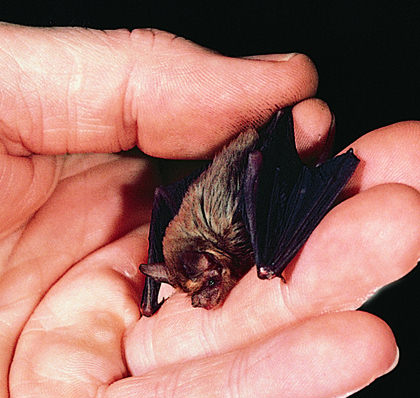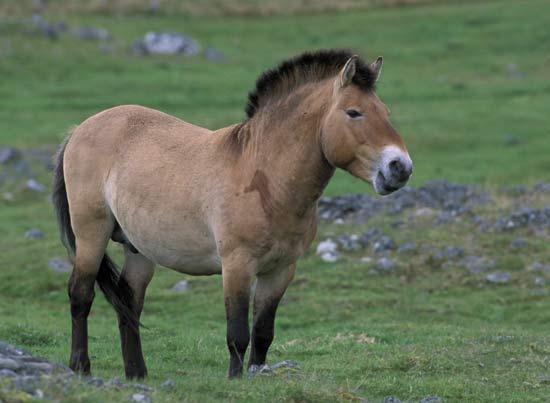Kitti’s Hog-nosed Bat
Kitti’s Hog nosed bat is also known as the Bumble bee bat and is the smallest known bat species today. Weighing in at about 2 grams, (roughly the weight of a dime) and attaining an adult length of only 30 to 40 mm, it is the only species to be found in this genus and it was thought to be found only in a small part of Thailand in the Sai Yok National Park, but recently was discovered in Myanmar, which is adjacent to this area.
The bumble bee bat as it is more commonly know is usually a reddish brown brown on it’s upper parts but it has been witnessed that it will sometimes be a dull grey color also. The one thing that remains the same is that the underparts are always a lighter shade of the same color, in many flying animals this will be true because it will help to conceal them from any prey that might be underneath them. They have quite long wings which are broad with a dark grey to black membrane and large ears which when extended will protrude past the nose which is rather like that of a pig(Hence the name hog nosed bat).
As with all bats they are nocturnal(active at night) and their most active period is usually just around dusk when they will leave their roosts, which are usually the warm higher chambers of the limestone caves that are quite common in this area. They roost there during the day as far from the mouth of the cave as possible. They live in relatively small colonies of only around 15 to 20 bats so that they can comfortably roost without being too close to each other.
The Hog Nosed bat will catch insects in flight, but specimens have also been found with spiders and insects that will be found on the leaves of the bamboo that it frequents indicating that it can also hover rather than just flying.
These amazing little creatures are not only small in stature, but their numbers are just as small they were first discovered in 1973 by a Thai biologist named Kitti Thonglongya . She sent several specimens to a British biologist named John E Hill and after she passed away quite suddenly in 1974 he registered the species and named it in her honor for the discovery.
On top of having an already limited habitat, they have also been severely hurt by irresponsible logging and deforestation. In the early 1980’s the Thai government found just 160 bats living in 3 different caves putting them on the top 12 most endangered list.




does kittis hog nosed bats hibernate
i love the hognosed bat its so cute!!!!!!!!!!!!!!!!!!!!!!!!!!!!!!!!!!!
It has a lot of amazing facts about the hog-nosed bat or bumblebee bat
the bats are special for us they eat all insects, they are good. people shouldn’t hurt them and they are cute.
their so cute i want one lol
lol that’s what i said :D
How long do they get pregnent for?
I feel so bad for the poor scraps. I can’t believe they’re almost extinct! D= Plus, why would someone kill a harmless, adorable creature?
The bubble bee bat is so little.
haha random question….would they let you have one? O.o
this is cool i am leaning at school about bumblebee bat and they sure are ugly
bats are lovely
wats up cyani carter im not there yet